Technologies
The Biggest Apple Watch Features I Want to Arrive in WatchOS 10
Apple is expected to announce its WatchOS 10 update at WWDC. I’m hoping to see deeper sleep insights, additional uses for the temperature sensor and more.
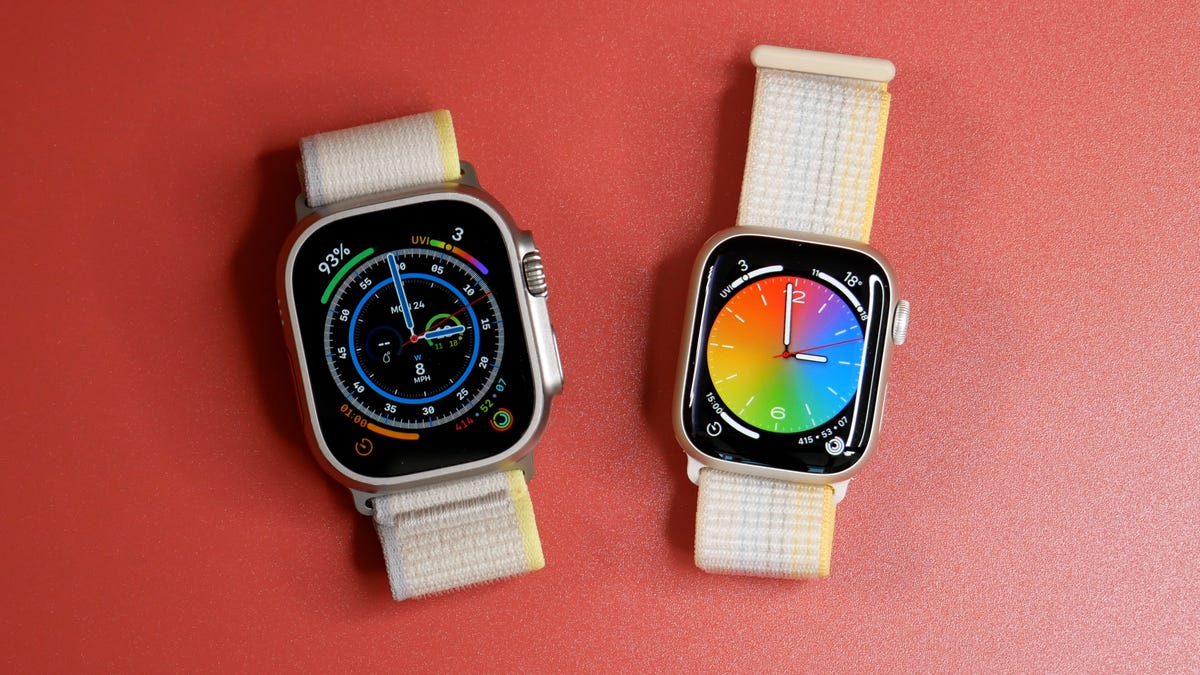
The Apple Watch has evolved into a comprehensive fitness tracker and a handy smartphone companion in the years since its launch. But at Apple’s Worldwide Developers Conference, which starts on Monday, I hope to see new features that make it more useful while helping it catch up to rivals.
The Apple Watch already has a bevy of exercise options and can measure more health data data points than I personally know what to do with. Yet it still lags behind competitors when it comes to delivering insights related to sleep and workout recovery. Fitness aside, I’d love to see more changes to the user interface that make it easier to get information quickly without making multiple taps and swipes.
Apple rarely discusses products or updates before formally announcing them, but it traditionally introduces new features for the Apple Watch at its developer conference. Software updates have become even more important for the Apple Watch in recent years, bringing upgrades that are arguably more meaningful than new hardware — like more running metrics and low power mode.
But there’s plenty of opportunity to further refine the Apple Watch’s software, especially by making more sense of all the health data it can gather.
Sleep chronotypes
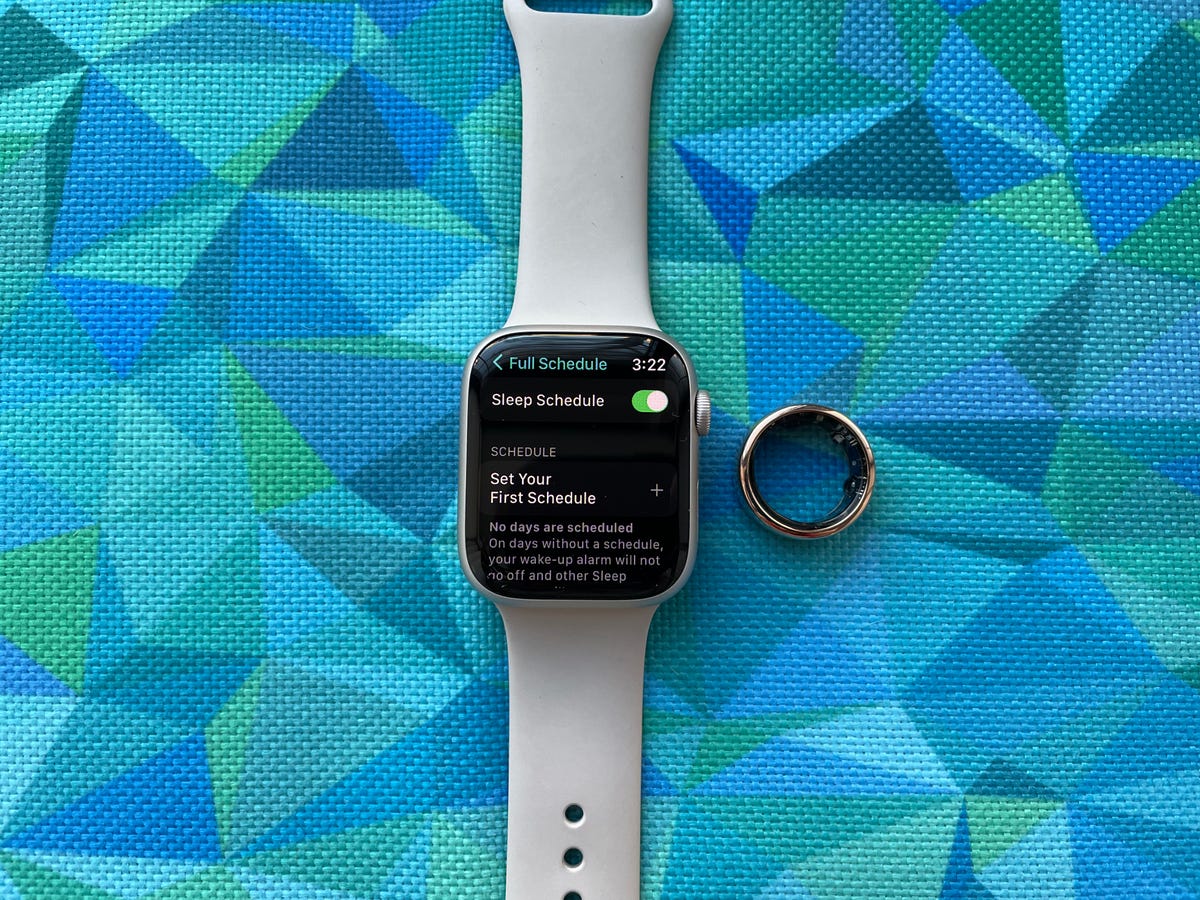
The Oura ring can tell whether you’re a morning or night person, unlike the Apple Watch
Your Apple Watch can show how long you slept and how much time you spent in specific stages of slumber, like deep and REM sleep. But brands like Oura and Citizen aim to take that a step further by issuing a chronotype based on your sleeping patterns and other data.
The term chronotype refers to whether your body has a natural preference for the morning or the evening. Oura measures this by analyzing your activity, sleep-wake cycle and body temperature; while Citizen crunches sleep data and alertness scores (which are generated after taking a test in the app).
I don’t expect Apple to mimic this exact approach, but it would be helpful to see more insights around how sleeping patterns tie into my overall energy levels throughout the day. There’s a lot more Apple could do when it comes to sleep tracking in general. While introducing sleep stage detection was a much-needed addition last year, I’d also still like to see some type of sleep score that summarizes the quality of my rest at a glance.
Recovery metrics
The Apple Watch is effective at getting me to move — maybe a little too effective. I obsess over closing at least one Activity Ring on a daily basis. But as I’ve written in the past, the Apple Watch could use more features aimed at workout recovery.
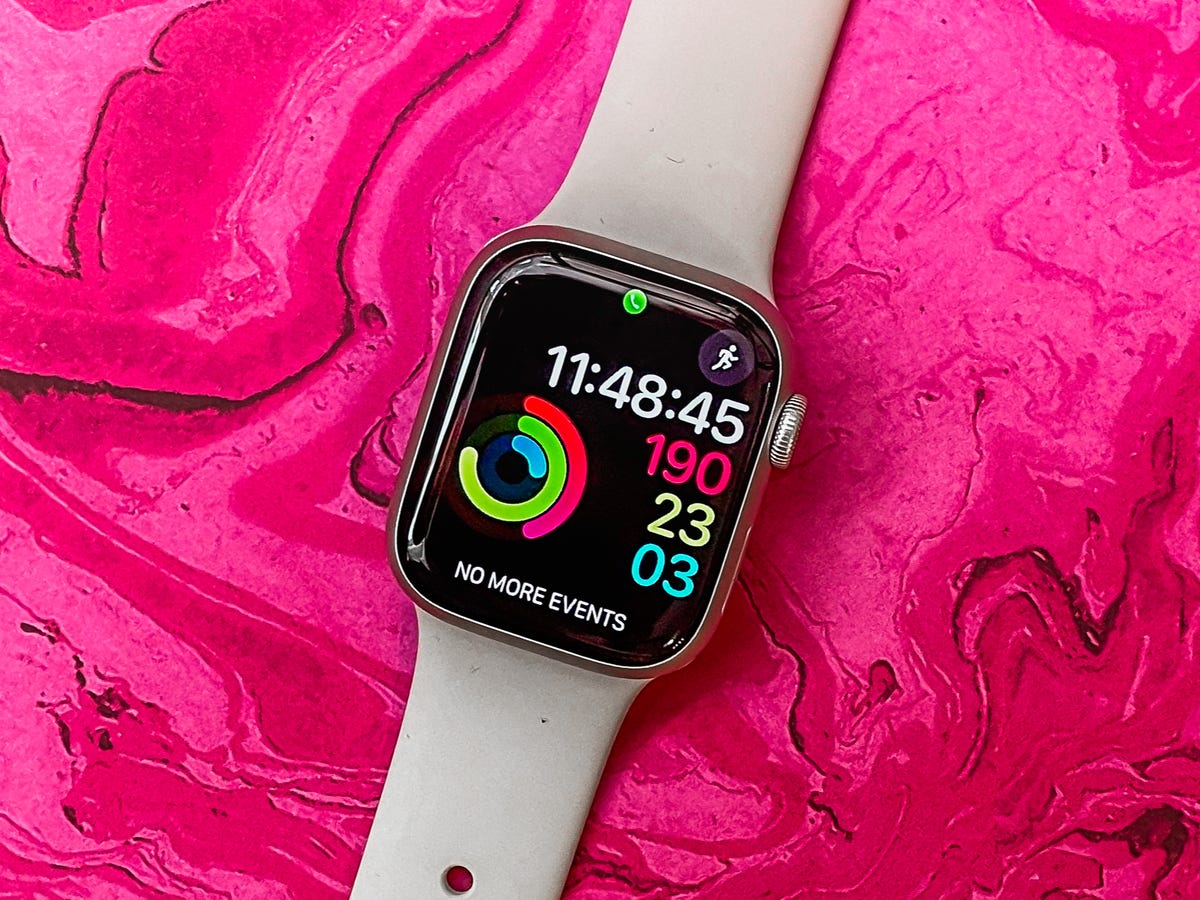
The Apple Watch’s Activity Rings motivate me to move. Now I just need a reminder to take a break.
The Apple Watch can encourage you to relax, get to bed on time or start moving when you’ve been inactive for too long. However, it doesn’t have any meaningful insights on how much rest you may need after a tough workout or a night of inadequate sleep.
Oura, Whoop and Fitbit all offer some type of recovery metric that helps you understand whether you’re ready for a big workout or need to take a rest day. They generally do this by examining sleep, activity and heart rate variability data among other factors. In the past, scores like these have helped me shake the guilt that comes with skipping a workout on days when I’m just not feeling up to it.
More customizable activity goals
My workout routine and activity levels vary by the day depending on how well rested I am, my workload, whether I’m commuting to the office and other factors. I wish I could adjust my activity goals to match. While you can easily change your activity goals by simply tapping the «Change Goals» button at the bottom of the activity summary on your watch, there’s no way to customize it according to the day. For example, I’d love to set a higher goal on days when I know I’ll get more steps in (i.e. the days I work from the office ) and at times when I’m usually well rested (the weekend), and lower it otherwise (i.e. my work-from-home days).
More QWERTY keyboard support
The Apple Watch Series 7 felt very similar to the Series 6 when I reviewed it in 2021. But there’s one feature that debuted on the Series 7 I miss when switching to older watches: the QWERTY keyboard. Yes, I know typing on such a tiny screen seems like more trouble than it’s worth, but hear me out.
There are plenty of times I’d like to quickly respond to a text message without reaching for my phone, such as when I’m waiting for the elevator at the office and my phone is buried in my bag, during a run or when my phone is across the room. The QWERTY keyboard has surprisingly become my favorite way to fire off a quick text in those circumstances.
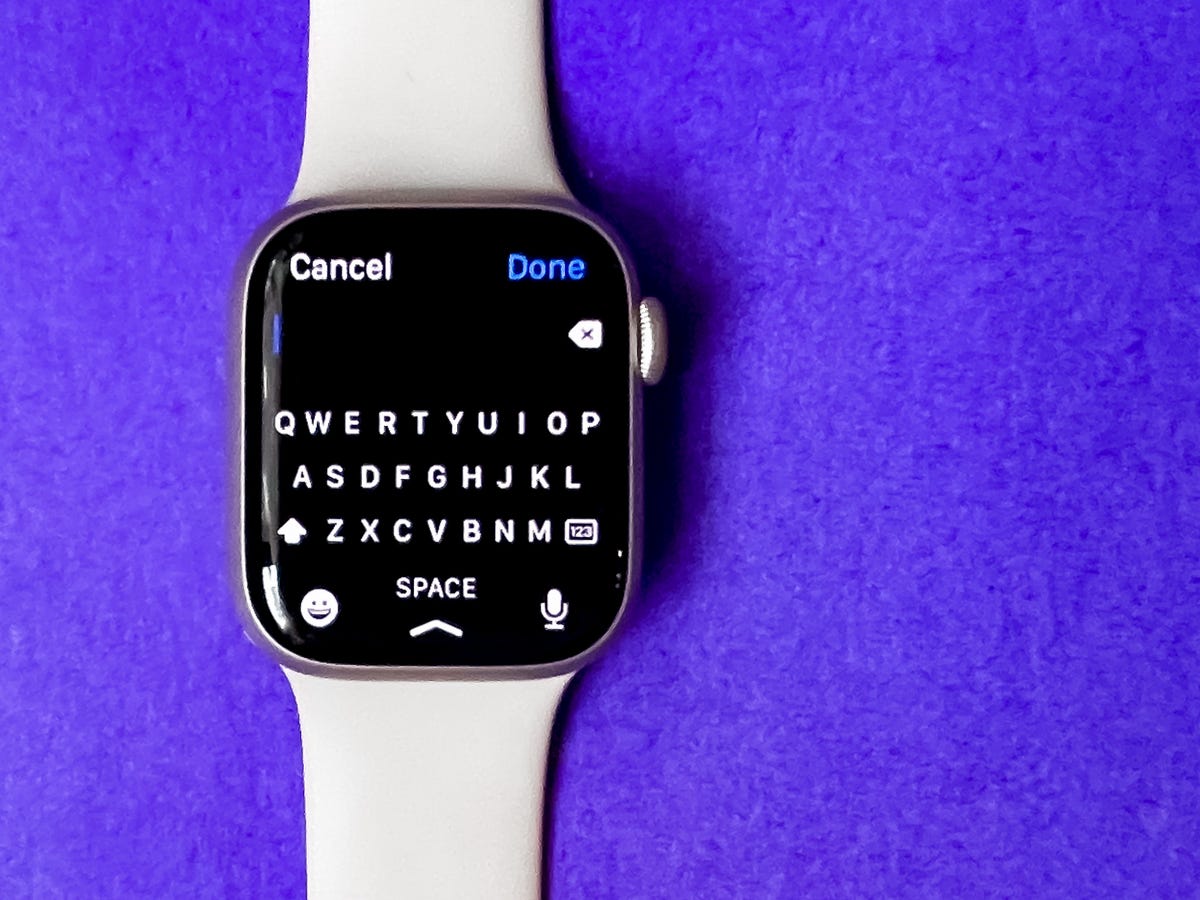
The Apple Watch Series 7’s keyboard
The QWERTY keyboard is currently available on the Apple Watch Series 7, Series 8 and Ultra because those watches have larger screens. While the bigger screen certainly makes it easier to tap and swipe, I could imagine the keyboard fitting just fine on the 44-millimeter version of older Apple Watches. It’s the one feature I really miss when switching back to an older watch like the Series 6. After all, even the Pixel Watch, which has a relatively small screen, has an on-screen keyboard.
Additional uses for the temperature sensor
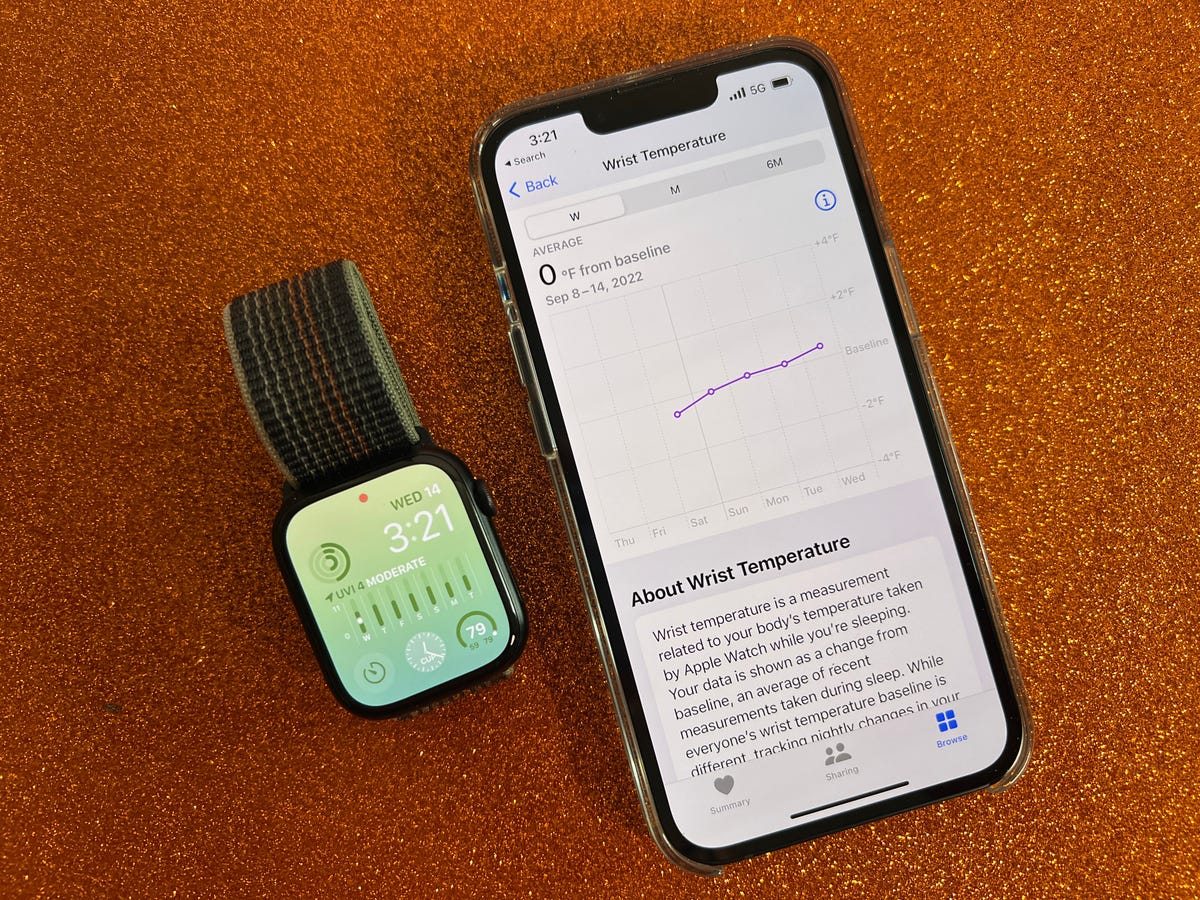
Temperature sensing shows up in the Health app. Readings are relative, so you’ll only see increases or decreases, not absolute numbers.
Apple debuted overnight temperature sensing in the Apple Watch Series 8 and Ultra. Right now, the technology is primarily used for providing retrospective ovulation estimates and improved period predictions. You can also view changes in your nighttime wrist temperature in Apple’s Health app, although there isn’t really a way to make sense of those numbers.
Apple should explore other ways to tie temperature data into new metrics. Oura, for example, uses temperature as one factor in determining that aforementioned readiness score. While I wouldn’t expect Apple to clone exactly what other gadget makers are doing, it would be interesting to see it somehow tie temperature readings into other insights.
Ahead of the Apple Watch Series 8 and Ultra’s arrival last year, Bloomberg reported that the Series 8 would be able to detect fevers. We haven’t seen such functionality yet, but if Bloomberg’s report is accurate, it suggests Apple is certainly thinking about future use cases.
An updated interface
The Apple Watch has existed for nearly a decade. While Apple has made many tweaks and additions to the software over the years, the general user interface remains the same. You still have two options for how apps are displayed, either in a list or a honeycomb format. Many interactions either come in the form of responding to a notification, tapping an app, or complication or dictating a request through Siri.
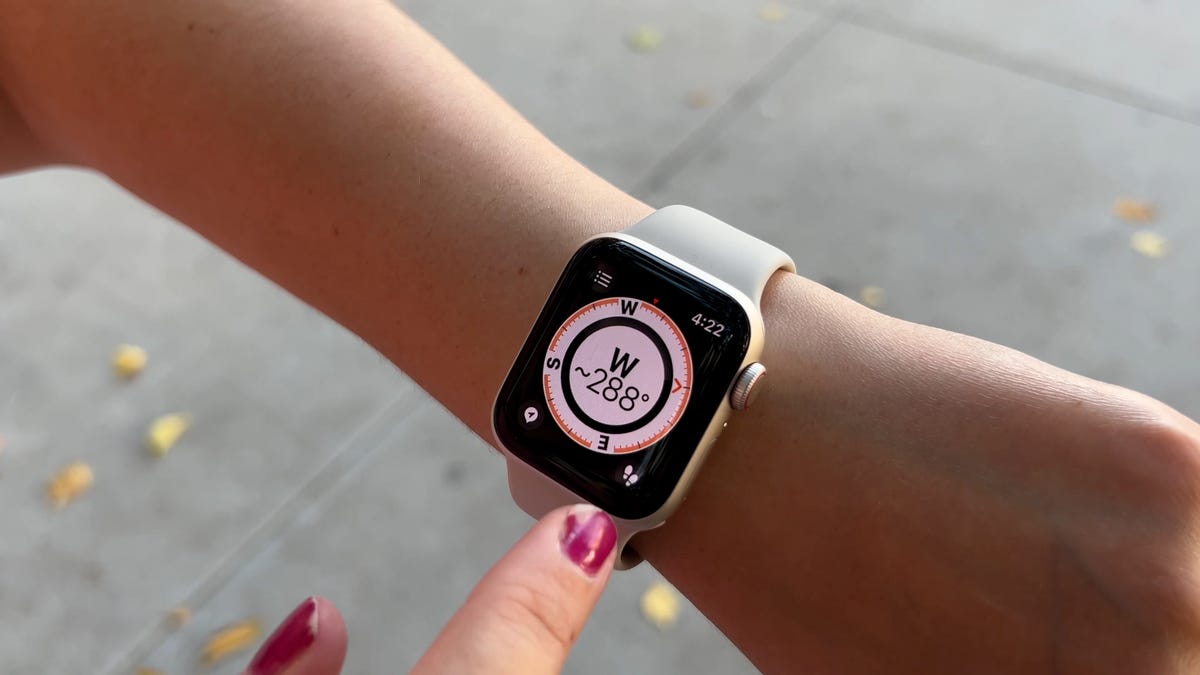
Apple Watch SE (2022)
In 2023, it’s time for a change. Precisely what that change is has yet to be determined, but I’d like to see any improvement that makes it easier to get things done with fewer taps and swipes. I also think the software could be more proactive. Imagine if your watch could suggest new customized watch faces decked out with complications based on your usage habits? The iPhone has gotten better at surfacing apps, contacts and other content intuitively, and I’d love to see more of that infused throughout the Apple Watch’s software too.
Bloomberg reports that some changes may indeed be coming in WatchOS 10. An April report said Apple is planning a big refresh that will make widgets a core part of the operating system, with the goal being to make it easier to see information at a glance.
Apple already gets many things right with the Apple Watch’s software; it’s one of the reasons why it’s the most popular smartwatch in the world. But additions like these could make it even easier to use while making it a more capable wellness tracker.
Technologies
Today’s NYT Connections: Sports Edition Hints and Answers for Aug. 21, #332
Here are hints and the answers for the NYT Connections: Sports Edition puzzle for Aug. 21, No. 332.
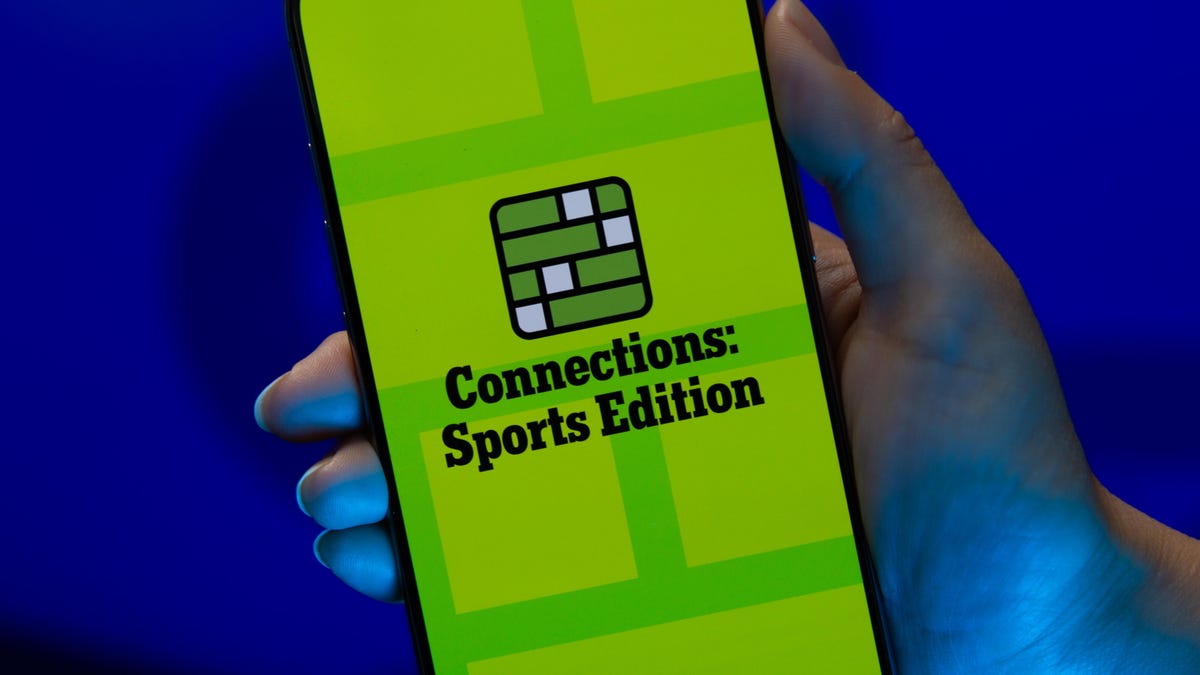
Looking for the most recent regular Connections answers? Click here for today’s Connections hints, as well as our daily answers and hints for The New York Times Mini Crossword, Wordle and Strands puzzles.
To solve today’s Connections: Sports Edition, focus on the endings of some of the words. That should help you see how they connect. Read on for hints and the answers.
Connections: Sports Edition is out of beta after making its debut on Super Bowl Sunday on Feb. 9. That’s a sign that the game has earned enough loyal players that The Athletic, the subscription-based sports journalism site owned by the Times, will continue to publish it. It doesn’t show up in the NYT Games app but now appears in The Athletic’s own app. Or you can continue to play it free online.
Read more: NYT Connections: Sports Edition Puzzle Comes Out of Beta
Hints for today’s Connections: Sports Edition groups
Here are four hints for the groupings in today’s Connections: Sports Edition puzzle, ranked from the easiest yellow group to the tough (and sometimes bizarre) purple group.
Yellow group hint: What you want to do.
Green group hint: Football abbreviations.
Blue group hint: Home to hoops.
Purple group hint: Hidden hockey team names.
Answers for today’s Connections: Sports Edition groups
Yellow group: Objective.
Green group: NFL teams, on scoreboards.
Blue group: NBA arenas ending with «Center.»
Purple group: Ends with an NHL team.
Read more: Wordle Cheat Sheet: Here Are the Most Popular Letters Used in English Words
What are today’s Connections: Sports Edition answers?
The yellow words in today’s Connections
The theme is objective. The four answers are aim, goal, mark and target.
The green words in today’s Connections
The theme is NFL teams, on scoreboards. The four answers are CHI, MIA, MIN and NO. (Chicago, Miami, Minnesota and New Orleans.)
The blue words in today’s Connections
The theme is NBA arenas ending with «Center.» The four answers are Barclays, Chase, Delta and Kia.
The purple words in today’s Connections
The theme is ends with an NHL team. The four answers are geoducks, spoilers, superstars and Vikings. (Ducks, Oilers, Stars and Kings.)
Technologies
Made by Google 2025: Everything Announced — Pixel 10, Pixel Watch 4, Pixel 10 Pro Fold
At a star-studded event hosted by late-night host Jimmy Fallon, Google announced new phones, watches, earbuds and Android features.
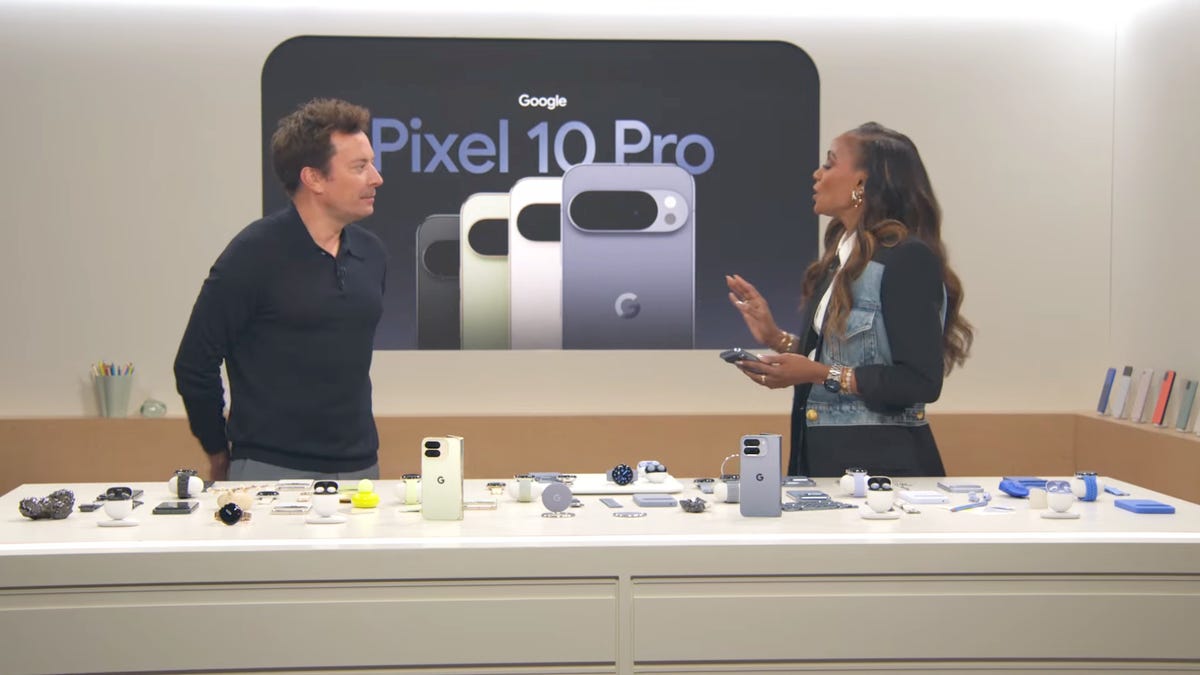
Even though the Pixel 10 leaks and rumors felt as if they arrived in a steady firehose before today’s Made by Google event — compelling the company to release a teaser video pre-announcing the new phone’s existence a month ago — Google still delivered details it somehow managed to keep private until it was ready to share.
And that delivery was refreshingly fun for a tech event. The Tonight Show host Jimmy Kimmel led the proceedings in a very late-night talk show format, bringing on several special guests from media, sports and yes, Google’s own experts to show off the products and features they’ve been working on for today’s announcements.
Pixel 10, Pixel 10 Pro and Pixel 10 Pro XL are real
Surprise, Google announced new phones! OK, this was the least surprising part of the event, but it still feels good to finally know what exists and when it’s coming. Preorders for the Pixel 10, Pixel 10 Pro and Pixel 10 Pro XL begin today and will be in stores and shipping starting August 28.
-
I’m Stoked That Google Made the Pixel 10 a $799 Value-Packed Feature Monster
-
I Tested Google’s Pixel 10 Pro XL in Paris, and I’m Impressed
-
Pixel 10 Pro and Pro XL First Look: Familiar Design, New AI Tricks
-
Google Launches the Full Pixel 10 Line, Including the Pixel 10 Pro and Pixel 10 Pro XL
Pixel 10 Pro Fold opens the next chapter of foldables
Folding phones so far have shared an Achilles Hinge: small particulates like sand can get inside the case and really mess things up. The Pixel 10 Pro Fold is one of the first to have an IP68 rating for dust and water resistance, meaning you can take it to the beach.
-
Pixel 10 Pro Fold Is Tougher, Smarter and Totally Dust Resistant
-
Forget the Pixel 10 Pro Fold. Foldables Should Look Like the Microsoft Surface Duo
-
Google’ Pixel 10 Pro Fold Is Here
Pixel Watch 4 talks to Gemini and is your new health coach
The Pixel Watch 4 includes new fitness options like real-time guidance while exercising. And if you forgot to start a workout, the watch (with AI help) can detect the activity in the background and remind you of it later, giving you credit for the effort you made. It’s also the only smartwatch that can detect a loss of pulse and call emergency services automatically.
-
Well Played, Google: The Pixel Watch 4 May Give Apple Watch Loyalists a Wandering Eye
-
Pixel Watch 4 First Look: Google Just Raised the Bar
-
The Pixel Watch 4 Is Here. Can It Finally Beat Apple?
Pixel Buds 2a are more affordable earbuds
Joining the Pixel Buds 2 Pro in the market are Pixel Buds 2a, an affordable ($130) pair of wireless earbuds that feature active noise cancellation, a smaller and lighter for all, and a twist-to-adjust stabilizer feature for setting a comfortable fit.
-
Google’s New Pixel Buds 2A Look a Lot Like the Pro 2, but Cost Way Less
-
Meet the Pixel Buds 2A: Google’s Budget Answer for ANC Buds
Pixel Buds Pro 2 owners will see new features
Coming in a software update next month, Pixel Buds Pro 2 owners will be able to answer calls or send them to voicemail with a nod or shake of the head. You’ll be able to talk to Gemini live in noisy locations, and benefit from adaptive audio that applies noise cancellation while letting important sounds come through. At the other end, a new feature will protect your hearing from very loud sounds.
Magic Cue is a Gemini assistant that pulls data from your correspondence
In the rollout of all the various AI technologies in the industry, the current stretch goal is «agentic» interactions with software: Having an AI that knows all sorts of details about you and can act to get the important stuff in front of you when needed. (And do it in a privacy-first way, one would hope.)
Magic Cue is Google’s implementation. It’s a new Gemini-based feature that can look through your earlier messages, emails and photos to pull details about things like restaurant reservations and flight times. Magic Cue runs on the Pixel device itself, so sensitive data stays private and not shared to the cloud.
A lot of Gemini AI intelligence is still coming soon
At the start of the event, Kimmell sat down in typical talk-show format with Rick Osterloh, senior vice president of platforms and devices, to chat about Gemini and the marvels of AI. Aside from Magic Cue, which will be shipping on the Pixel 10 phones, a lot of the features we’ve been hearing about are still on the horizon.
«For instance, Gemini could do something like plan a team celebration dinner for 12 people tonight,» he said. «It might go find a restaurant that’ll accommodate that group…. Look for a karoake place nearby and maybe even order custom T-shirts for the celebration.»
And when will that be possible? Kimmell asked. «A lot sooner than people think,» Osterloh replied. «This kind of thing is coming this year.»
The Pixel 10 Pro and 10 Pro XL can zoom to 100x with AI help
Pro Res Zoom on the Pixel 10 Pro phones pushes zooming far beyond what would seem to be possible with typical small cameras. Usually when you zoom beyond the optical limits of the cameras, details get fuzzy as the software upscales the image. With Pro Res Zoom, when you go beyond 30x zoom, it uses generative AI to build a sharper version. CNET’s Andrew Lanxon got both impressive and head-scratching results while making photos in Paris using the Pixel 10 Pro XL.
Camera Coach uses AI to encourage better photos
Smartphone cameras have employed AI for several years, such as identifying subjects in order to blur the background for Portrait modes or quickly snapping several shots at multiple exposures and blending them together to create well-balanced lighting throughout. Now Google is using AI to help you take better photos.
Camera Coach is a new feature in the Pixel Camera app that looks at the scene in front of the lens and generates multiple suggestions for how to improve the photo before it’s captured. To show this off, podcaster Alex Cooper brought Fallon out to be her model and sat him down on a couch. When she activated the feature, Camera Coach suggested that she move the camera closer to the subject, position his head in the upper portion of the frame, lower the camera to eye level and turn on Portrait mode.
«To all the girls that are watching, I personally know how hard it is to train your boyfriend or your husband to get that perfect shot,» said Cooper. «And now Camera Coach can just train all the boys for us.»
Pixel 10 supports Qi2 magnetic charging
The Qi2 spec includes not just faster charging but also an array of magnets on the back for connecting to accessories. Sound familiar? The presenters mentioned Apple’s MagSafe system, then paused with the realization that they probably shouldn’t have name-checked it during the Google event. On the Pixel 10 phones, it’s called Pixelsnap and should work with accessories made for Apple’s ecosystem too.
Pixel 10 will be available in Mexico
In an impressive segment demonstrating Gemini live translation during a phone call, musician Karen Polinesia, who speaks Spanish, announced that for the first time, the Pixel 10 will be available for sale in Mexico.
This article is being updated; stay tuned for more.
Technologies
Upgrading to Pixel 10? Here’s How to Prepare Your Old Pixel for Trade-In
Don’t send off your phone with a ton of personal information still on it.
Google just announced the Pixel 10 family, and several preorder offers are available right now. If you’re looking for an even better deal on these new phones, you might want to consider trading in your old Pixel for maximum savings.
The Pixel 10 family consists of the base Pixel 10 model, two Pro models and the latest Pro Fold. All of these phones feature the latest Tensor G5 Processor, Qi2 wireless charging and, of course, new AI tricks. We went hands-on with the new phones, and they made a good impression.
If you’re ready to leap into a new Pixel, you’ll want to make sure you’ve prepared your old phone properly before you send it off.
If you don’t check all the right boxes for trading in your phone, its trade-in value could be reduced. You also want to avoid sending your phone out with a ton of personal information still left on it.
Below, we’ll go over the steps to ensure a seamless trade-in experience when your new Pixel 10 arrives.
For more, we’ve wrangled all of the best Pixel 10 cases you can buy right now.
Turn off the activation lock on your Pixel phone
Before you trade in your phone, you’ll just need a factory reset to qualify for the maximum trade-in value. Some retailers want you to remove the activation lock from your phone first, which requires removing the device from your Google account before resetting it. (AT&T took off over $400 of the value because I didn’t do this to my Pixel 7 Pro when I upgraded to the 8 Pro a few years back.)
You can remove your Google account from your phone directly or via your online account.
From your Pixel settings
You can remove the activation lock right from your Pixel phone. H:
- On your phone, navigate to Settings.
- Tap Passwords & accounts.
- Tap your Google account.
- Tap Remove account.
Repeat this process for any additional accounts you need to remove.
From the web
Alternatively, you can head to your online Google account web page and handle the removal from there.
- From a web browser, navigate to your Google account.
- Select Security on the left sidebar.
- Locate the Your devices box, and select Manage all devices.
- Select the device you’re trading in.
- Select Sign out.
Factory reset your Pixel
With the activation lock removed, you’re now free to factory reset your device as you normally would.
- On your Pixel, navigate to Settings.
- Tap System.
- Tap Reset options.
- Tap Erase all data (factory reset).
That’s it. Now you’re ready to send in your trade-in without any hiccups that could drop the value you get for your phone.
For more, check out a closer look at the Pixel 10 Pro XL’s camera performance.
-

 Technologies3 года ago
Technologies3 года agoTech Companies Need to Be Held Accountable for Security, Experts Say
-

 Technologies2 года ago
Technologies2 года agoBest Handheld Game Console in 2023
-

 Technologies2 года ago
Technologies2 года agoTighten Up Your VR Game With the Best Head Straps for Quest 2
-

 Technologies4 года ago
Technologies4 года agoVerum, Wickr and Threema: next generation secured messengers
-

 Technologies4 года ago
Technologies4 года agoGoogle to require vaccinations as Silicon Valley rethinks return-to-office policies
-

 Technologies4 года ago
Technologies4 года agoBlack Friday 2021: The best deals on TVs, headphones, kitchenware, and more
-

 Technologies4 года ago
Technologies4 года agoOlivia Harlan Dekker for Verum Messenger
-

 Technologies4 года ago
Technologies4 года agoiPhone 13 event: How to watch Apple’s big announcement tomorrow
